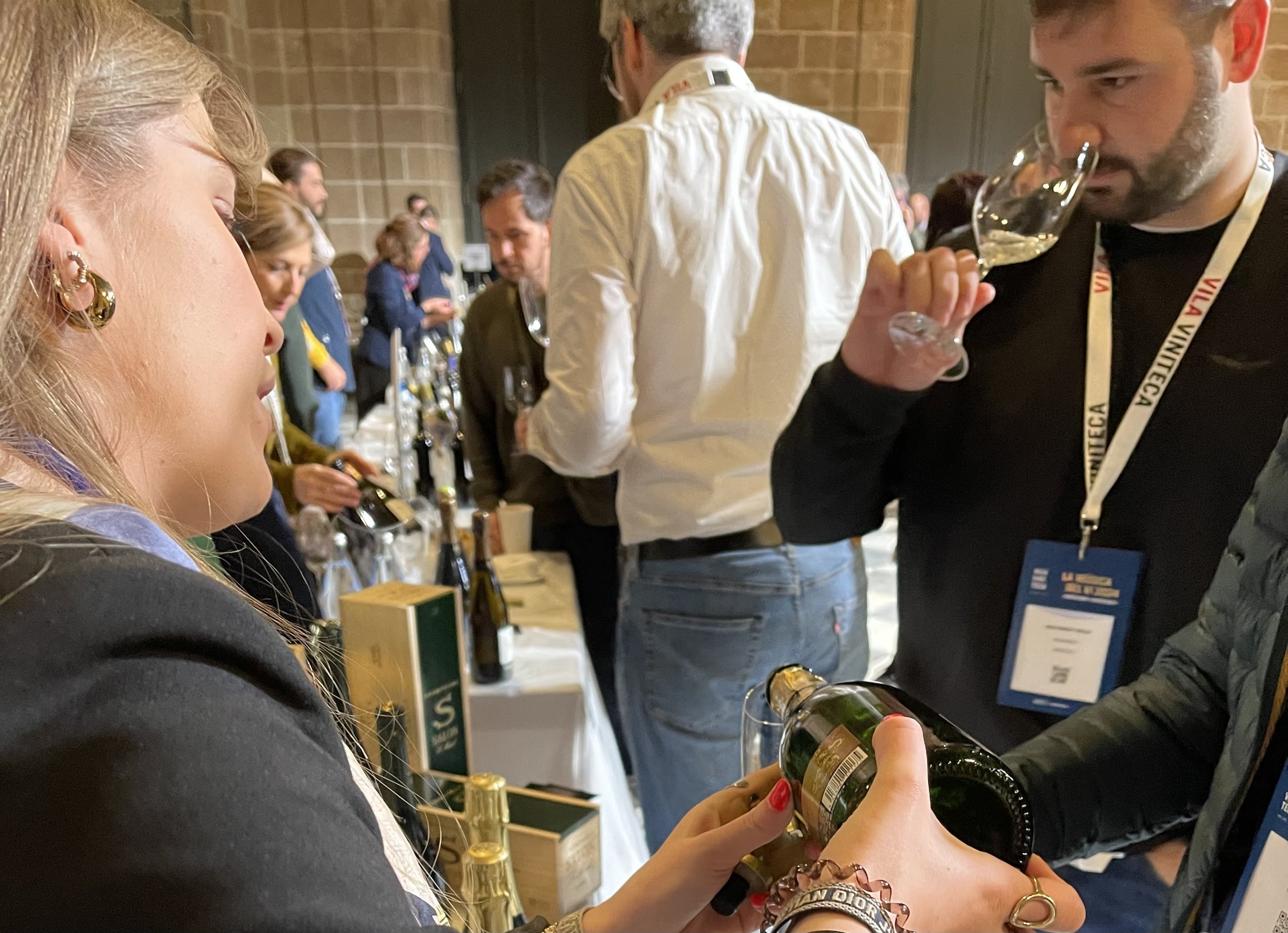Musica del Vi 2024
Wine Tasting Notes
Oscar and I met at the entrance, taking our time to explore before diving in. As we wandered, we sampled Lustau’s Palomino and paused at the Riedel glassware display for a quick chat. Eventually, we stepped into the bustling main hall on the ground floor. The Delamotte Champagne stand was already crowded, but we decided to join in, knowing it would only get busier as the day went on.
Delamotte Champagne: A Timeless Classic from Le Mesnil-sur-Oger
Champagne Delamotte is one of the oldest Champagne houses, founded in 1760 in Le Mesnil-sur-Oger, a prestigious village in the Côte des Blancs known for producing some of the finest Chardonnay in Champagne. It is the sister house of Salon Champagne, one of the most exclusive producers in the region. While Salon is only produced in exceptional vintages, Delamotte offers a more accessible yet equally refined expression of Côte des Blancs terroir.
Winemaking Style & Terroir
Delamotte specializes in Chardonnay-dominant Champagnes, reflecting the purity and minerality of the Grand Cru vineyards of Le Mesnil-sur-Oger, Avize, and Oger. The wines are known for their elegance, finesse, and crisp acidity, balanced with a creamy texture from extended lees aging.
Delamotte’s Champagnes
Brut NV – A blend of 55% Chardonnay, 35% Pinot Noir, and 10% Meunier, this is a crisp and balanced Champagne with notes of citrus, white flowers, and a subtle toasty brioche finish.
Blanc de Blancs NV – 100% Chardonnay from Grand Cru vineyards, offering bright acidity, chalky minerality, green apple, lemon zest, and a creamy mousse.
Blanc de Blancs Vintage – Only made in the best years, this is a more structured and age-worthy expression, with layers of almonds, citrus, white peach, and a refined saline finish.
Rosé NV – A rare and elegant rosé made primarily from Pinot Noir, featuring notes of wild strawberries, raspberries, and rose petals, with a delicate mousse.
Tasting Profile & Characteristics
Aroma – White flowers, citrus zest, green apple, and hints of brioche.
Palate – Elegant, precise, and mineral-driven, with lively acidity and a creamy texture.
Finish – Long, crisp, and refreshing, often with a saline or chalky touch.
Pairing Suggestions
Seafood – Oysters, scallops, and sushi.
Cheese – Aged Comté, Parmesan, or creamy goat cheese.
Light dishes – Poultry, white fish, or truffle-based dishes.
Delamotte is a classic yet underrated Champagne house, offering exceptional quality at a great value compared to some of its more famous neighbors.
Delamotte Stand
As we strolled through the event, we explored stands featuring wines from the Rhône Valley and Austria’s Kamptal region. We weren’t quite ready to dive in just yet, but when we found ourselves in front of the Spanish selection, we decided to try their Mencía. The woman at the stand was incredibly enthusiastic, making it hard to slip away immediately.
Out of the corner of my eye, I noticed the Burgundy stands were already filling up—unsurprising, given their popularity. Everyone seemed eager to get a taste of their renowned Pinot Noir and Chardonnay. We were feeling a bit selective in our choices, but let’s be honest—who isn’t excited to try something new and different?
We skipped the Burgundy area and decided to venture off the beaten path and headed to Movia from Slovenia and the Spanish region. We also indulged in the distinctive selection from Muchada-Léclapart, based in Sanlúcar de Barrameda, Cádiz. Their wines have an irresistible character that I can't get enough of! The wine is tense and mineral-driven, with a saline edge that lingers on the palate. Its layered complexity reveals notes of citrus, white flowers, and a delicate oxidative nuance, making it truly one-of-a-kind.
Naturally, we couldn’t pass up the chance to sample Bimbache from El Hierro before unexpectedly running into Javier at the Artadi stand in Rioja Alavesa. What a delightful surprise!
Bimbache Blanco (Listán Blanco / Verijadiego Blanco)
"A wine that captures the wild energy of El Hierro, Bimbache Blanco is saline, taut, and mineral-driven. It opens with aromas of citrus zest, green apple, and wild herbs, layered with a hint of smoky volcanic earth. The palate is electric and tense, with a vibrant acidity that cuts through its slightly textured, lees-aged mouthfeel. A lingering finish leaves traces of salt spray and crushed stones, making it a true reflection of its Atlantic terroir."
Tasting Terms:
High acidity – Crisp and refreshing.
Saline & mineral – Reflecting the volcanic soils and ocean influence.
Slightly textured – Likely from lees aging or gentle skin contact.
Lean yet expressive – A wine that is precise and terroir-driven.
Bimbache Tinto (Baboso Negro / Listán Prieto)
"A light yet deeply expressive red, Bimbache Tinto is fresh, herbal, and elegantly rustic. On the nose, it reveals red berries, dried flowers, and a touch of wild Mediterranean herbs, with an underlying hint of earth and volcanic ash. The palate is vibrant and lifted, showing bright red currant, tart cherry, and a whisper of smoky minerality. Fine-grained tannins and a delicate structure make it almost Burgundian in finesse, yet unmistakably Canarian in soul. The finish is long, with a lingering spicy, peppery note that adds complexity."
Tasting Terms:
Light-bodied yet structured – Similar to a high-altitude Pinot Noir.
Earthy & herbal – Notes of wild thyme, dried flowers, and volcanic soil.
Smoky & mineral-driven – A signature of El Hierro’s terroir.
Bright acidity & fine tannins – Keeping the wine fresh and lively.
